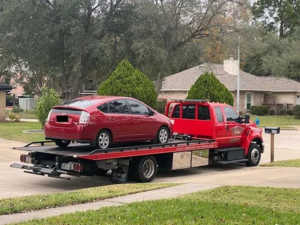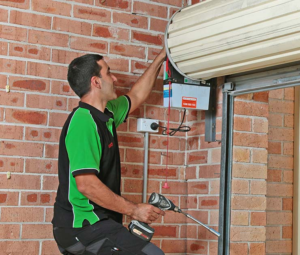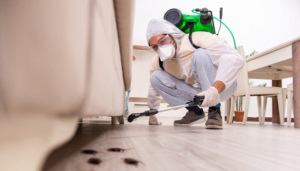Whether hauling your boat to the lake or taking your ATV across town, a trailer is one of the best ways to get your equipment and vehicle from point A to point B. However, improper towing can damage your vehicle and create road hazards for others.
Understanding the difference between GVWR and towing capacity can help avoid unnecessary wear and tear. Read on for tips on keeping you safely on the road. Contact Phoenix Towing now!

Regardless of what you’re towing, there are always certain safety precautions that must be taken. It’s important to ensure that both the towing vehicle and trailer are not overloaded, as this could lead to a range of problems including loss of control, damage to equipment and serious accidents on the road. Make sure to carefully calculate the weight of both the loaded vehicle and the towed cargo and refer to the gross vehicle weight rating (GVWR) or trailer capacity set by your vehicle manufacturer for assistance.
Similarly, it’s crucial to be familiar with the mechanics of your vehicle before hitting the road. This includes checking that the brakes, tyres and other essential components are in good condition before towing anything. Additionally, it’s a good idea to inspect the hitch coupler, draw bar and other equipment that connects the trailer to the towing vehicle. These should be secure, properly crisscrossed and have just enough slack to allow turns without causing the chain to disengage or the trailer to swing.
When towing, it’s also a good idea to increase your following distance and drive more slowly than you would in normal driving situations. This will give you time to react to traffic slowdowns, and it will help reduce stress on your suspension system.
It’s also a good idea to put on hazard lights or use reflective triangles to improve visibility. This is especially important when travelling in low light or at night. Finally, it’s a good idea to check and correct tire pressure on both the towing vehicle and the trailer, as this can dramatically impact driving stability and performance.
Once you’re confident that everything is safe and sound, it’s a good idea to practice your towing technique in an empty parking lot before embarking on any lengthy journeys. This will allow you to get used to the extra weight and length of your vehicle and ensure that you can handle it well on the road.
Don’t Overdo It
As you’re likely aware, each vehicle has a maximum weight limit that it can safely tow. Towing a load beyond this capacity can put excessive strain on your engine, transmission, brakes and suspension, which can lead to damage and safety hazards.
This is why it’s important to always know the maximum allowable weight for your trailer and your towing vehicle. It’s also a good idea to keep these numbers in mind when adjusting your driving style when towing. This means avoiding sudden acceleration or braking, and maintaining a safe speed. It’s also important to be aware that towing increases the time and distance it takes to stop your vehicle, so you should allow for extra braking distance.
In addition, it’s crucial to be fully focused on the road when towing. This is especially true if you’re traveling on hills or in bad weather. If you’re not completely in the moment, it’s very easy to lose control of your rig and cause an accident. It’s also a good idea not to use the phone, read the map or talk with passengers while towing.
Lastly, it’s important to keep in mind that trailers are fairly simple machines. They don’t require much maintenance or repairs if you treat them right. This means taking proper care of the hitch, ball mount and other components. You should also regularly inspect the trailer for any signs of wear and tear. Additionally, if you have air suspension in your truck, be sure to keep it at its normal ride height when towing. This will help to prevent uneven tire wear and improve your handling.
Don’t Be Afraid to Ask Questions
When you have a trailer, it’s important to know what the maximum capacity is and how much weight your tow vehicle can handle. This information will come in handy for both safety and legal reasons. If you’re not sure, don’t be afraid to ask! You don’t want to get into any trouble.
Another big thing to remember is that you need double the amount of lights when towing a trailer. In many places, it’s against the law to not have working lights on a trailer. Make sure you have both sets of brake lights, as well as turn signals and tail lights. This way, when you hit the brakes in your tow vehicle, they will illuminate on the trailer at the same time, giving other drivers the message that you’re slowing down.
If you’re unsure about how to properly hook up your trailer or aren’t sure of your towing capacities, reach out to a towing company and find out. They should be able to help you, or at the very least point you in the direction of someone who can.
Also, don’t be afraid to ask about any additional safety precautions the tow company may take when approaching your vehicle. For instance, some companies will text you when they are within a certain distance, send pictures of their technician who will be helping you, or even call your phone to let you know that they’re nearing your car. This can be a great way to avoid criminals who may try to take advantage of stranded drivers.
Towing is a skill that takes practice, but it’s not hard to master once you know the basics. The more you practice, the more it will become second nature. And when it does, it’ll be a great tool to have in your toolbox for any future adventures you may take on the road. So don’t be afraid to ask questions and put in the time to learn and practice! You’ll be glad you did when you’re cruising down the highway with your trailer attached. Good luck!
Don’t Be Afraid to Call for Help
If you aren’t comfortable driving a vehicle with a trailer, or even towing one at all, you can always call for help. The tow truck driver will be able to safely guide you to your destination. They are familiar with these routes and can help you to avoid any problems or obstacles along the way.
It’s important to check the payload capacity of your trailer before heading out on the road. Then, you can make sure that your towing vehicle has the capacity to haul the load without damaging either the towing vehicle or the trailer. You should also have the suspension of your towing vehicle inspected regularly as it will take more strain when pulling a trailer.
A tow truck will be able to help you when you need it most, whether on the side of a busy highway or in a remote part of town at night. It’s a good idea to keep some basic emergency supplies in your vehicle, such as a spare tire and jack, flashlights, reflective vests or flares, first aid kit, and non-perishable food. This will ensure that you’re prepared for any situation that might arise.
When you break down, it’s vital to give the tow truck driver clear directions to your location. Be sure to include a phone number or contact information so that they can reach you in an emergency. You should also be sure to park in a safe place where the tow truck driver can easily hook up your vehicle.
Remember to stay calm and use your best judgment when waiting for a tow truck. It’s easy to get anxious in these situations, but keeping your cool and being aware of your surroundings will make the situation easier for everyone involved.
The most important thing to remember while towing is that you should never attempt to move an injured person unless told to do so by a medical professional or law enforcement official. Moving an injured person can lead to further complications and could potentially be fatal. Likewise, if you’re in an unfamiliar area or at odd hours of the night, it’s wise to park in a well-lit and safe parking lot, away from any distractions that may lure you into dangerous territory.




